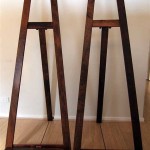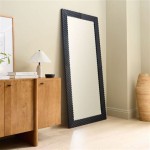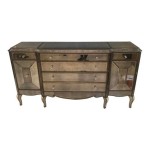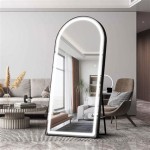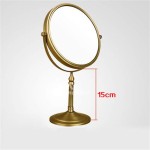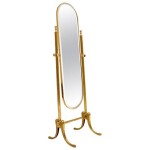How to Put LED Strip Lights on a Mirror
Adding LED strip lights to a mirror creates a modern, stylish look while providing functional task lighting. This article outlines the steps involved in successfully installing LED strip lights on a mirror, ensuring both aesthetic appeal and safety.
Planning and Preparation: Careful planning is crucial for a successful installation. Begin by measuring the perimeter of the mirror where the LED strips will be placed. This measurement determines the required length of the LED strip. Consider the mirror's location and purpose. Bathroom mirrors, for instance, require waterproof LED strips and power supplies.
Choosing the Right LED Strip Lights: Select LED strips specifically designed for indoor use, paying attention to color temperature and brightness (lumens). Warm white (2700-3000K) creates a cozy ambiance, while cool white (5000-6500K) offers brighter, more vibrant illumination. Consider the density of LEDs per meter for a more uniform light output. Higher density strips provide smoother, more consistent lighting.
Selecting a Power Supply: The power supply must be compatible with the chosen LED strip. Check the LED strip's voltage (typically 12V or 24V) and wattage. Choose a power supply that provides sufficient wattage with a safety margin of at least 20%. This prevents overloading and ensures the power supply's longevity.
Gathering Necessary Tools and Materials: Assemble all necessary tools and materials before starting the installation. These typically include the LED strip lights, power supply, connecting wires, wire connectors, a soldering iron (if necessary), wire strippers, measuring tape, scissors or a utility knife, alcohol wipes, mounting clips or adhesive tape, and a drill (for some installations).
Cleaning the Mirror Surface: Thoroughly clean the mirror's surface where the LED strips will be attached. Use alcohol wipes to remove any dust, grease, or fingerprints. A clean surface ensures optimal adhesion of the mounting clips or adhesive tape.
Preparing the LED Strip Lights: If necessary, cut the LED strip to the desired length. LED strips are typically marked with cutting points. Ensure the cut is made precisely at these designated points to avoid damaging the circuitry. Some LED strips require soldering to connect wires, while others have connectors for easier installation.
Connecting the Wiring: Connect the LED strip to the power supply using the appropriate connecting wires. Ensure correct polarity (+ and -) is maintained. If soldering is required, use a soldering iron to securely connect the wires. Use heat shrink tubing or electrical tape to insulate exposed connections and prevent short circuits.
Testing the Connection: Before permanently mounting the LED strip, test the connection by plugging the power supply into a wall outlet. Verify that the LED strip lights up correctly and that all sections are functioning as intended. This allows for troubleshooting any wiring issues before final installation.
Mounting the LED Strip: Attach the LED strip to the back of the mirror frame or directly to the mirror using mounting clips or adhesive tape provided with the LED strip kit. Ensure the strip is positioned evenly and securely. If using adhesive tape, apply firm pressure along the strip to ensure proper adhesion.
Concealing the Wiring: Route the wiring from the LED strip to the power supply discreetly. Use cable clips or adhesive channels to secure the wiring and prevent it from being visible. Consider the placement of the power supply, ensuring it is accessible but hidden from view.
Finalizing the Installation: Once the wiring is concealed and the LED strip is securely mounted, reconnect the power supply to the wall outlet. Test the lights again to ensure everything is working correctly. Enjoy the enhanced aesthetics and functionality of the illuminated mirror.
Safety Precautions: Always disconnect the power supply from the wall outlet before working with any electrical components. Follow the manufacturer's instructions for both the LED strip and the power supply. Ensure proper ventilation around the power supply to prevent overheating. If unsure about any aspect of the installation, consult a qualified electrician.
Alternative Mounting Techniques: For mirrors without frames, consider using aluminum channels to mount the LED strips. These channels provide a clean and professional finish while also acting as a heat sink for the LEDs. Alternatively, create a frame for the mirror using wood or other suitable materials, allowing for concealed wiring and LED strip placement.
Maintenance and Troubleshooting: LED strip lights require minimal maintenance. Occasionally, dust the strips with a soft cloth to maintain optimal brightness. If sections of the LED strip fail to illuminate, check the connections and the power supply. Replace any faulty components as needed. Refer to the manufacturer's warranty information for specific guidance on replacements and repairs.

How To Diy Vanity Mirror With Led Strip Lights

How To Diy Vanity Mirror With Led Strip Lights

How To Diy Vanity Mirror With Led Strip Lights

How To Make A Vanity Or Bathroom Mirror With Strip Lights

How To Diy Vanity Mirror With Led Strip Lights

How To Install Led Light Strips Behind A Tv Or Mirror Sound Remote Controlled Lights

Diy Led Light Strips For Mirror Practical Advice Nakashi Lighting

How To Install A Strip Light On Mirror

How To Diy Led Light Strips For Mirror Ledyi Lighting

How To Diy Vanity Mirror With Led Strip Lights

